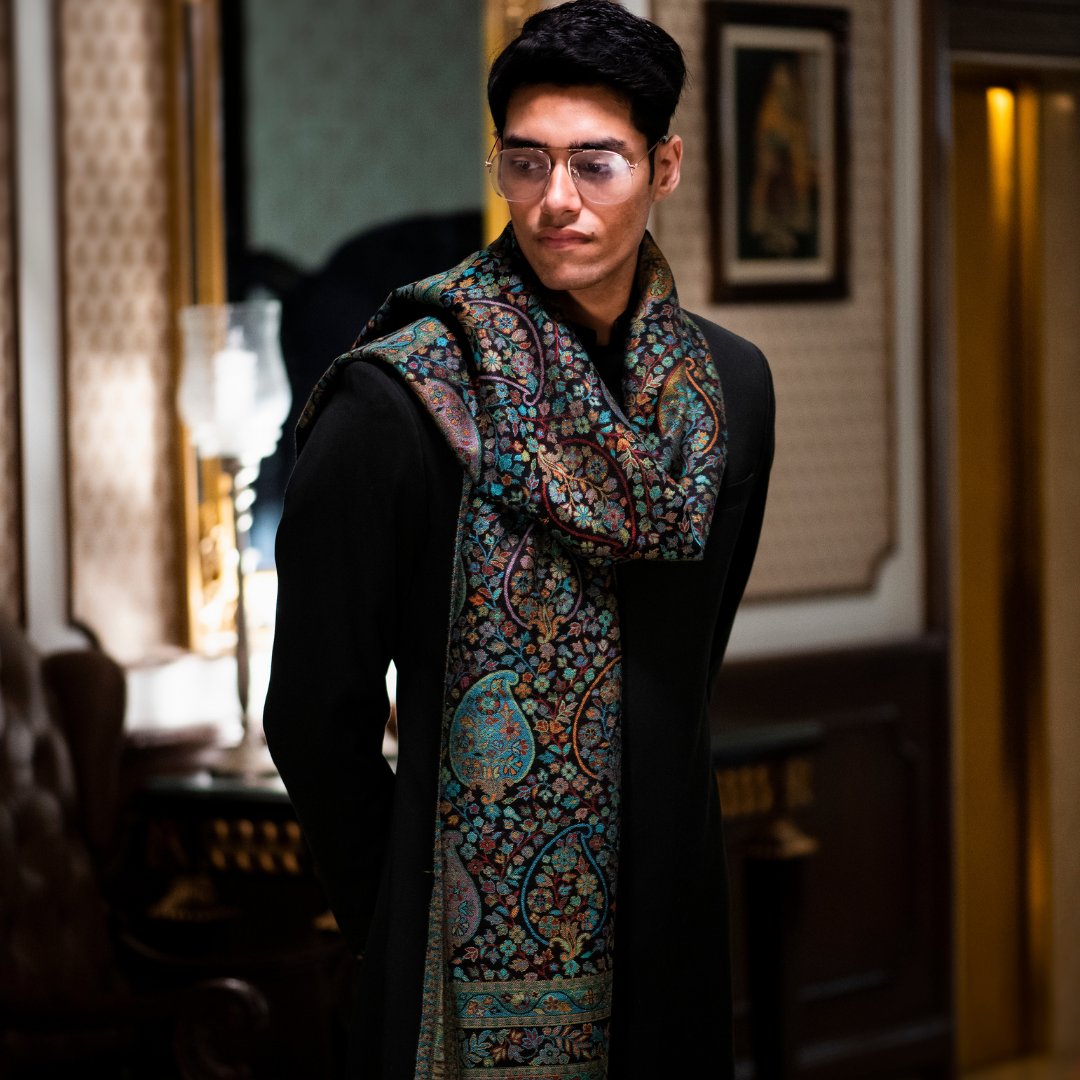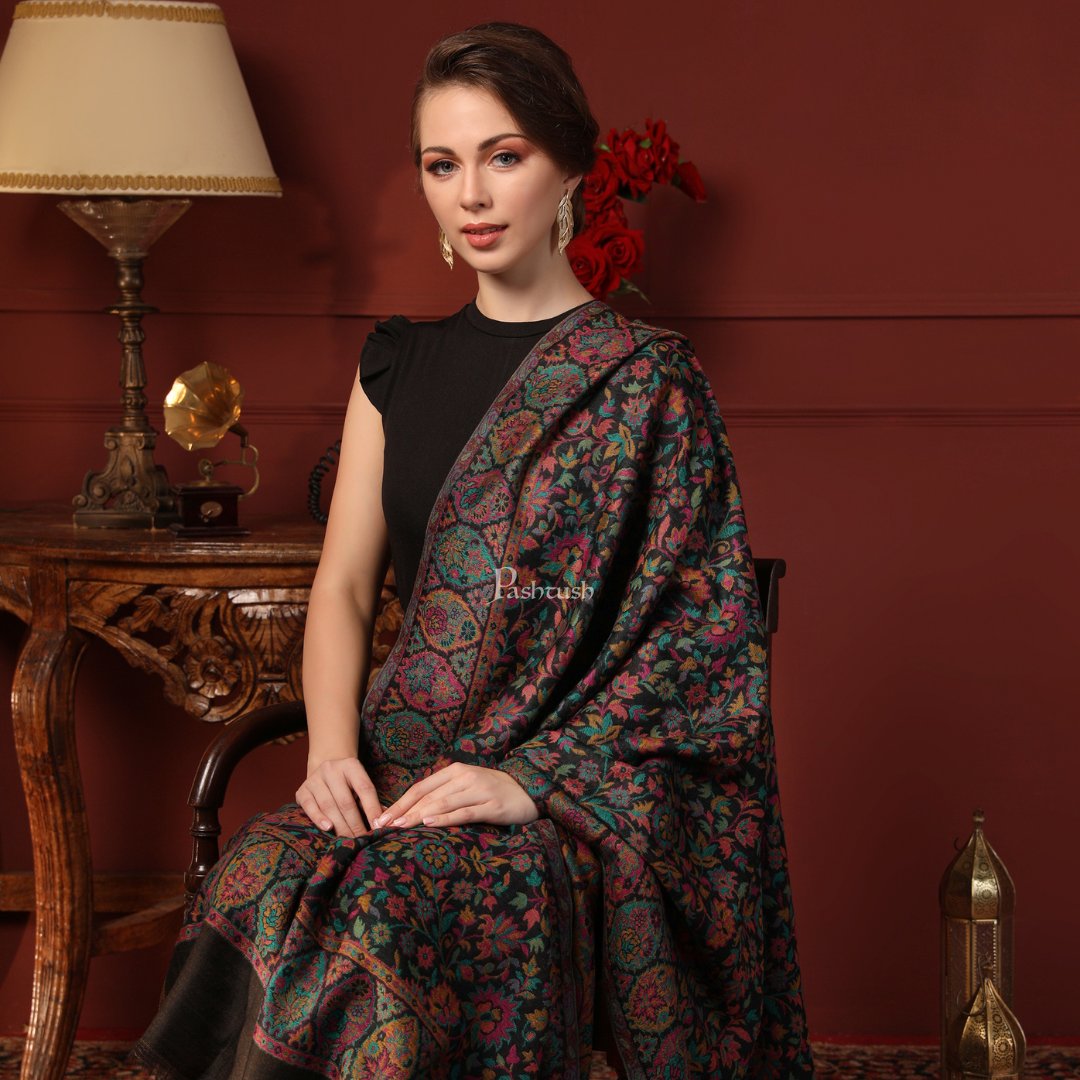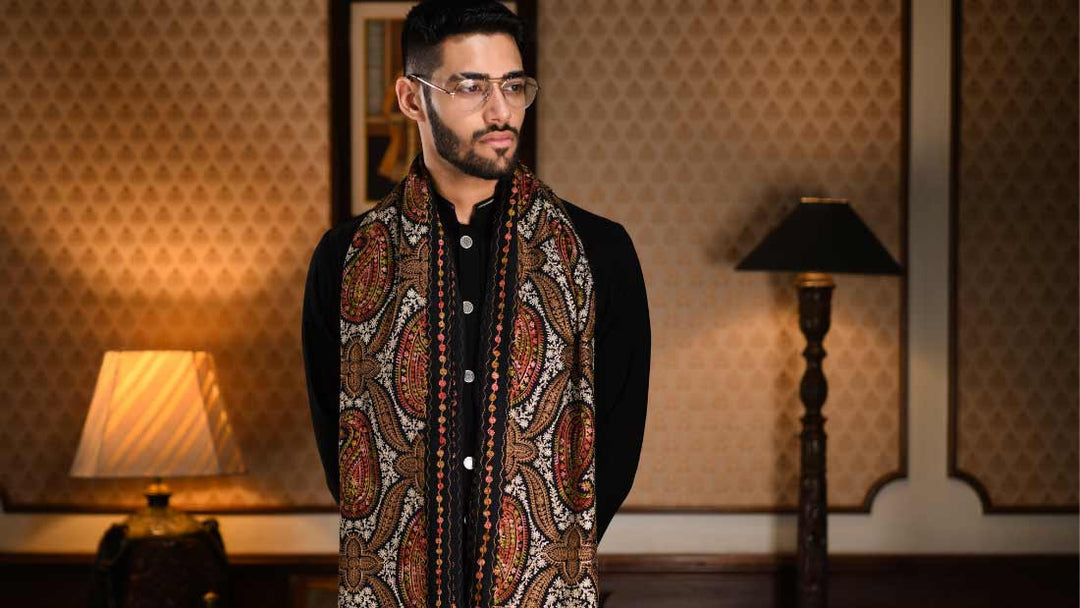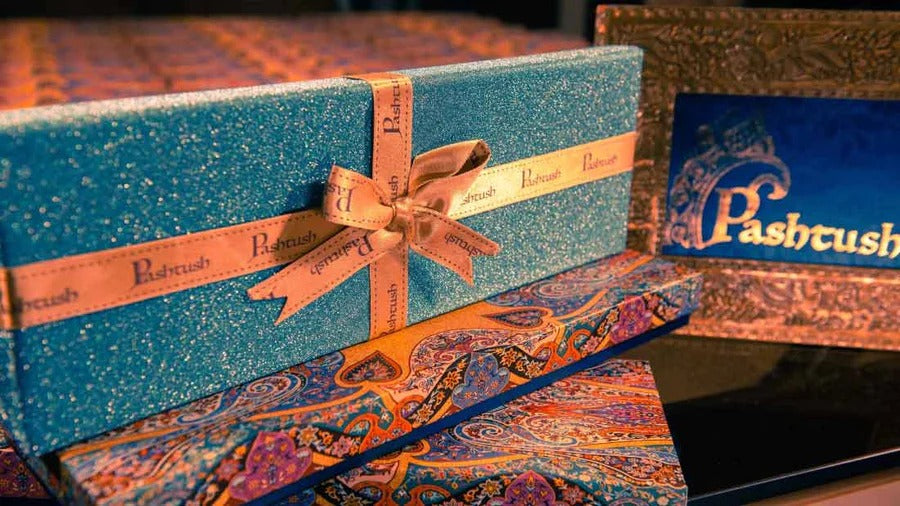Shawls - The Mainstay of Kashmir, Punjab and Himachal Economies

Over the years, a lot has changed in the shawl industry. What hasn’t changed is that it still plays a crucial role in the rural as well urban economies of the three contiguous states of Kashmir, Punjab and Himachal Pradesh.
Kashmir
The shawl industry is one of the biggest employers in Kashmir and is, as they say, as old as the hills of Kashmir. The effect on its economy can be gauged by the fact that when I joined my family’s Amritsar based 150-year-old shawl business fifty-five years ago; shawl was a synonym of embroidered woollen shawl made in Kashmir.
Shawl industry in Kashmir has two components:
-
The real Kashmiri shawl: Made from finest wools obtained from sheep of Kashmir, Ladakh, Tibet and Central Asia, this product epitomises the shawl industry of Kashmir. Raw wool is spun to produce yarn, which in turn is woven to produce an extra fine shawl fabric. The real Kashmiri shawl fabric is woven either as a plain fabric, or in a weave known as chasm-e-bulbul or as Chasm-e-bulbul is a masterpiece of a weaver’s art that has different differently shapes figures all over the surface of the fabric.
-
What is Kaani Weave ?
Kani or Kaani is a weaving style that uses small wooden sticks known as kanis. Weft thread of different colours is wound around kanis to create magical colourful patterns. With the passage of time, master weavers developed shawl fabric with stripes and squares and reversible shawls with different colour on each side.

-
What is Kaani Weave ?
The entire process, from spinning raw wool to weaving to dyeing and embroidery is done by artisans without the aid of machines.
View Pashtush Pure Pashmina Shawls
-
Embroidery work on shawls: Different embroidery styles are done on shawls. The most intricate and exotic embroidery work is reserved for the real Kashmiri shawl fabric made from the fine wool. Nevertheless, a vast majority of embroidery is done on power loom fabric supplied from Punjab, primarily, Amritsar. Most have one-sided embroidery using viscose or silk thread using a variety of stitches that include running, stem, satin and chain stitches. There is a wide range of embroidery types, from the ordinary to the intricate to double-sided embroidery where the embroidery looks the same on both sides of the cloth, sometimes even in different colours on each side, known as aksi. At the top of the pyramid is embroidery work where the artisan puts in almost 500 stitches per square centimetre of cloth to cover the entire base fabric with needlework.

Weaving Dreams: This chromolithograph drawn by Scottish artist, war artist and war correspondent William Simpson who visited Kashmir somewhere between 1859-60.
Embroidery work forms the major portion of the shawl industry in Kashmir. While a significant portion of it is done by professional artisans, there are casual embroiderers as well who take to embroidery work to augment the family’s income in winters when there is no work to do in the fields. Traditionally, they would gather under the aegis of a master, who guides, supervises and checks the work of each embroiderer.

Kashmiri Sozni Embroidery on Pashmina Shawls
Punjab
Punjab, on the other hand is a different ballgame altogether.
While the general perception is that of an exquisitely Kashmiri shawl, the reality is that Punjab has always played a significant role in sustaining the Kashmir shawl industry.
Since the real Kashmiri shawl fabric is handmade and uses rare fine wool, it is not only expensive there is also the factor of shortage of raw material. This gap is filled by machine made shawl cloth. Initially, before independence, shawl cloth in lumps was imported from Britain. It was only later that the mill owners of Amritsar started manufacturing it locally.

Initially, the role of Punjab’s shawl fabric was limited mostly to supply to Kashmir. However, with the passage of time, business houses started exploring the avenues for getting embroidery work done in Punjab itself. What started as an experiment grew into a major business activity over the years.
Initially, only cheap and shoddy embroidery work was done in Punjab. Contractors would lift fabric for job work and get embroidery work done by women in remote and not so remote villages. The contractors, known as tupgars, succeeded in finding new regions where they could get better embroidery done on shawls. They ventured beyond the Gurdaspur – Dinanagar belt into Himachal Pradesh. A few enterprising contractors even set up centres to teach needlework to young women in villages.
Over the years, not only did the quality of embroidery improve greatly, currently more embroidery is done in Punjab and Himachal Pradesh than is done in Kashmir.

Embroidery work in Kashmir is done only by men, primarily professional artisans. However in Punjab and Himachal however, it is mostly done only by women, young and old who know how to wield a needle and embroider.
A major geographical shift happened after the 1965 Indo-Pak war when Ludhiana emerged as a major competitor. Ludhiana however came to focus on artificial yarns to produce acrylic shawls with small geometrical designs and later started copying the jacquard shawls made in Amritsar.
In recent times, arrival of new technology has transformed the industry in a big way. New machinery, both in the weaving as well as embroidery sector, has resulted in a paradigm shift where the focus is now on both handcrafted shawls as well as machine made shawls. With each having its respective patrons.
Himachal Pradesh
While the embroidery work was a new entry in the shawl industry of the state, it also had its own traditional shawl manufacturing activities based in small towns of Kullu, Kinnaur and Nurpur.

Weavers of Kullu and Kinnaur started with weaving plain shawls. However, things changed in the 1940s with the arrival of handicraft artisans from a hilly western Himalaya promontory bordering Tibet in the northern part of then undivided Punjab region. The focus then shifted to patterned shawls. Currently, what is commonly known as Kullu shawl is a shawl with multicolour geometrically patterned borders on two ends of the shawl. In fact, shawls made in Kullu are a major part of heritage of Himachal Pradesh and is supported by the provincial government.
The town of Nurpur, on the other hand, was and is still famous for fine Pashmina or Cashmere shawls. Pashmina shawls of Nurpur are not only different from those made in Kashmir they are also much cheaper.
To date, shawl manufacturing in Himachal is primarily a handloom industry. Initially based primarily on rabbit wool its weavers shifted to good old merino wool after rabbit wool was banned.
View Pashtush Kullu Weave Shawls and Scarves
Conclusion
A vast majority of the shawl industry in all three states belongs to the small sector, which, though unorganised, covers and feeds a large section of the population in these three states. Be it manufacturing, embroidery, processing or marketing, it provides employment to hundreds of thousands of men and women alike. One of the typical features of shawl making in India is that shawl fabric goes through numerous stages before the final product is ready for sale. The typical feature of these processes is that almost none of them are in-house but outsourced. While some of these processes like dyeing and finishing are outsourced to small workshops and factories, others such as making fringes, shearing of extra embroidery threads, checking, and folding are sent out to households.
One of the major reasons of the vibrancy of economies of these three states has been the support extended by the peculiar nature of shawl manufacturing. The industry has also created a strong intra state bond where all three support each other. The unique nature of the pashmina shawl industry where all manufacturing activity is in cities and all embroidery work is done in villages is also instrumental in bridging the gap between urban and rural populations.
-------------------------------------------------------------------------------------------

Written by Mr. Suresh Kapur
Suresh Ji is a seasoned veteran of the shawl industry with an experience of more than 50 years. Dont let his grey hair fool you, he is an ardent travel enthusiast who absolutely loves hiking. And did we mention he's a voracious reader and has written extensive articles and columns on a plethora of topics for national and international publications.
2022 Pashtush India









Leave a comment